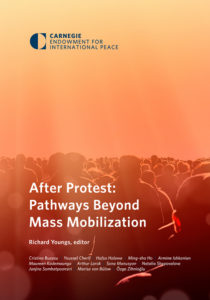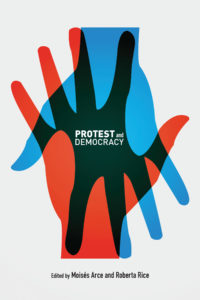 The United States has failed to develop a systematic approach to the global wave of protests, failing to shore up US capacity to achieve strategic ends, including shoring up global democracy and pushing back against the authoritarian resurgence, according to a new analysis.
The United States has failed to develop a systematic approach to the global wave of protests, failing to shore up US capacity to achieve strategic ends, including shoring up global democracy and pushing back against the authoritarian resurgence, according to a new analysis.
The mass political protests that have captured media attention over the past year, such as those in Hong Kong and Santiago, are part of a decade-long trend line affecting every major populated region of the world, the frequency of which have increased by an annual average of 11.5 percent between 2009 and 2019, note CSIS analysts Samuel Brannen, Christian Stirling Haig and Katherine Schmidt:
- Mass protests increased annually by an average of 11.5 percent from 2009 to 2019 across all regions of the world, with the largest concentration of activity in the Middle East and North Africa and the fastest rate of growth in sub-Saharan Africa.
- Analysis of the underlying drivers of this growth suggests the trend will continue, meaning the number and intensity of global protests is likely to increase.
- Protests have resulted in a broad range of outcomes, ranging from regime change and political accommodation to protracted political violence with many casualties.
- Factors that could increase the rate of protest include slowing global economic growth, worsening effects of climate change, and foreign meddling in internal politics via disinformation and other tactics.
 Russia, China, and Iran are notably active in suppressing protest movements within their own borders. They also advise and assist other country governments in suppressing protest movements, and in some cases meddle uninvited in other countries’ protest movements by exploiting existing political cleavages.
Russia, China, and Iran are notably active in suppressing protest movements within their own borders. They also advise and assist other country governments in suppressing protest movements, and in some cases meddle uninvited in other countries’ protest movements by exploiting existing political cleavages.- Three potential catalyzing factors, which could intensify the trend or make it more manageable, warrant particular attention: (1) the use of technology by protestors and governments alike, (2) the tension between shifting democratic and authoritarian government types, and (3) the need for improved understanding and responsiveness between governments and their citizens.
- To date, the U.S. government has failed to develop a systematic response to the rising tide of global protests. The Unites States has thus far treated each as an anomaly rather than a greater trend, failing to scale up U.S. capacity to achieve strategic ends, including by shoring up global democracy and pushing back against the spread of authoritarian tactics.
- The outbreak of the novel coronavirus in early 2020 appears to have temporarily interrupted the surge of protests from 2019 in Hong Kong and Iran, though protest movements from Canada to India continue.







